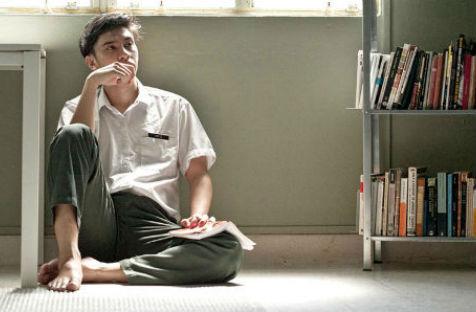At the just concluded World Theatre Festival held at the Powerhouse Theatre in Brisbane, a little Malaysian play called Parah, by the Instant Café Theatre, quietly entered the program listing. It left as the surprise package, impressing many through word-of-mouth publicity and universally good reviews in places like Crikey, XS Entertainment and Critical Mass. The 90-minute play, performed entirely in Bahasa with English subtitles, centres around the friendships of four high-school students, archetypes of the different races in Malaysia, and the discovery of a torn page in a high-school textbook, containing a racial derogative.
At one point in the play, Chinese-Malaysian character Kahoe, dreams of leaving Malaysia for Australia, envisioning it as the place where kangaroos roam free – the antithesis to his own containment.
It is a perspective on Australia by outsiders rarely seen on a Queensland theatre stage.
In recent years, when conversations regarding interaction with arts in Asia arise, the presumption seems to be of Australian artists travelling to or engaging with Asia, and returning with culturally diverse, aesthetically different material, to be showcased to Australian audiences via a localised prism. However, the conversation in the arts world does not seem to include an Asian perspective on Australia – a perspective that is equally important in contributing to national discourses.
In an issue of the Griffith Review themed ‘What is Australia For’, Julianne Schulz writes of an anxiety regarding Australia’s future national identity, and active participation with Asia. ‘The emerging Asian century,’ she writes, ‘provides a moment that may make it possible to extend [the Australian] good fortune for decades. Just as the gold rushes of the nineteenth century created the basis of national infrastructure, cultural identity and character, the current boom provides an opportunity for renewal and reinvigoration.’
Professor Stephen Carleton of the University of Queensland feels that an infusion of Asian aesthetics can only serve to make the Australian theatre milieu richer.
‘Australian playwrights and theatre-makers have long been interested in South-east Asia, and in Australia’s role and presence in the region,’ he says. ‘There was a big push from Keating in the 1990s for Australian artists to engage with Asia, and a brief moment there when Australians of Asian heritage began to get a guernsey on the national stage. There have also been collaborations with Indonesian theatre companies on the Australian stage.’
However, Professor Carleton insists there is still a prevailing gap in terms of how Asian aesthetics are being utilised in Australian art spaces. ‘What we haven’t seen over here though,’ he says, ‘is much theatre by Southeast Asian playwrights that looks at their countries’ associations with Australia – good or bad.’
Such Asian perspectives of Australia could incite a more nuanced appreciation among local audiences in engaging with themes of national identity and belonging.
Rachel Fensham and Peter Eckersall write that the current balance in the existing history of intercultural relations in theatre is skewed, in Dis/Orientations, Cultural Praxis in Theatre: Asia, Pacific, Australia. ‘As in all intercultural relations there are social and economic inequalities in the theatre,’ they say, ‘and the exchange has most often favoured the West over the cultures of the East with the benefits of new ideas borrowed from different artistic traditions, cheap commodities, exotic locations and eventual export markets.’
As if to balance this scenario, the Parah effect at the World Theatre Festival culminated in an offer of a Creative Partnership to its writer, Singaporean Malay playwright Alfian Sa’at. Professor Carleton, who approached Sa’at, says his choice was based on several aspects of Sa’at’s work, but also his faith in Sa’at’s capability of imbuing new perspectives in his writing. ‘I picked Alfian out of the World Theatre Festival because I thought of all the playwrights who were there in person, he was the most experienced and had the strongest sense of where his work fitted into the broader political scheme of things.’
Sa’at himself already exhibits high interest in how writing for an Australian audience might influence his work. Speaking of his time in Brisbane during the festival, he says, ‘I guess what was interesting to me was guessing where the city ended and the suburbs began; the zones were unclear to me, which is a good thing.’ Consequently, he feels it will be the wide spaces of Brisbane that will seep into his writing. ‘ ‘Walking’ as a corollary to the act of ‘thinking’ is something you can’t really do in Singapore – and of course that is also connected in a more profound way with the walkabouts and the songlines. I have an affection also for any society that experiences a cultural cringe and that of being a poorer cousin to some other metropolitan centre.’
If Australia is to continue redefining its position in Asia, it would need to include Asia in its arts in ways that are deeper and more profound. Watching Asian theatre as a way of understanding Asian cultures is one thing – but understanding what such cultures think of this place, could be a very interesting beginning.





